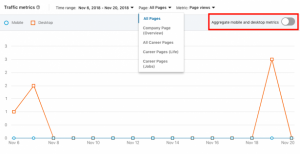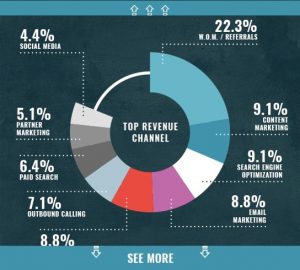sale

Image by Gerard Stolk (vers l’Avent)
sale
steeds vroeger
The sales effort needs planned to suit the appetite of the business, and some ratios can be developed to rationalise the process. It should be possible to gain some idea of the conversion rate of various sales streams in your business.
I worked in one business where 15% of the quotations put out turned into firm orders. These ratios could be turned on their head to calculate how many quotation requests we needed to generate to result in the desired level of business.
I recently talked to an internet marketeer who reckoned that one order in 1000 hits was possible on a poor email list moving to one order in 500 from a better targeted list. This allowed him to better plan his email and web activity.
There is the concept of the sales funnel where a large number of leads are qualified and processed to result in a reduced number of orders. This sales funnel can be categorised into different steps of advancement for your business.
Each member of the sales team should have targets and be assigned a segment of leads at various stages in the sales funnel. Some leads have merely requested information – a follow-up communication may result in an appointment or phone consultation moving onto a proposal or quotation. Finally a few of these quotations will result in a purchase decision.
A sales person needs to prioritise and weight their opportunities. This process should guide the amount of time they assign to each prospect. Obviously the higher the likelihood of success or the higher the invoice value of a prospect, the more speculative time will be assigned. Using their time efficiently is one of the key success indicators of a salesperson. They should have unwavering nose for time spent in truly productive activity and time spent on less directly productive housekeeping, or even diversionary or displacement activity. They need to be very honest with themselves and not retreat into comfort activity.
The sales team need to consider ways to increase their rate of sales closure. More accurate classification of promising leads and more skilled handling of current leads will ensure higher rates of success. Good training and confidence is vital. Product and marketplace awareness are important. However also vital is a good understanding and conscious control of the sales cycle. Business should find time to train their sales staff how to sell. This training should have a recurrent element as staff always need reminded, re-inforced and re-inspired. The analogy is with the teacher or the coach. Not only must they have sound knowledge of their subject or their skill. They must also have skills and awareness of the teaching and communication process. Likewise with the salesperson.
These didactic and communications skills boil down to simple things like ensuring your mouth and ears are used in proportion – twice the amount of listening to speaking. Find out where the prospect is at and start your communication process from there. Each person has a different understanding of their need, and of your offer. Do not just have a set ‘spiel’ that cannot be adjusted and de-jargonised for each different recipient. Ensure you continually see things from the prospect’s point of view. Ensure you pitch your propositions in terms of benefits to him rather than listing the technical features of your product, or even of benefits to you of him giving you business. This last tendency by the way is an endless struggle as the default always seems to be to retreat into your comfort phrases and stories, rather than reinvent and reinterpret for each individual you are communicating with.
Another key performance indicator is the length of the sales cycle. Patterns will emerge in your business of the length of time from the first contact to the purchase decision. There are ways to shorten this sales cycle, and some of them are in the hands of the sales team. Good time management and the timely handling of each step can dramatically shorten the sales cycle. Achieving this will improve the personal performance of the sales person.
Clear realistic goals and close monitoring of progress are also important in delivering optimal sales performance. I have seen so many businesses where the senior executives, with little understanding of the sales process, try to inspire with insipid or unrealistic appeals for results.
Often they inadvertently depress and de-motivate the sales team with their superficial exhortations for more sales, with little or no understanding of what is involved, and also with no promise of, or even consideration of, additional resource.
The sales team need realistic and achievable goals but they also need clear rewards for achieving these goals. Once again the business needs to understand the importance of this. Many businesses do not. They think that virtue is its own reward and a bottle of wine at Christmas will suffice. A hundred times each day a sales person can either take the easy choice or the hard choice. If they have strong incentives they will take the hard choice more often – to make that difficult phone call or deal with that difficult task. They need strong reasons for doing this and those agreed targets and incentives must be respected by both the sales person and management.
Basil O’Fee
September 2010
Involved in all aspects of the sales, marketing and business development processes in a range of industries during my career – airline, airport, B2B, promotional, gift, lifestyle magazine, souvenir and sports. Managed an agent network, worked with brokers, with an in-house commercial team, and successful experience of preparing complex inter-disciplinary tenders, proposals and submissions. Enjoyed revenue from public sector, high street retail, defence sector, oil sector, general public and business customers. Had a period specifying and importing leisure goods from the Far East. Pioneering new markets – a range of achievements in this more challenging business development task.
(665)




